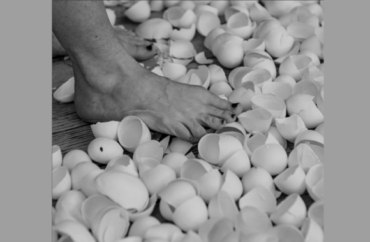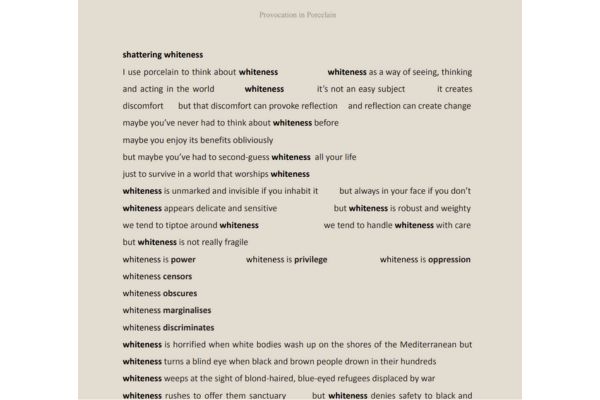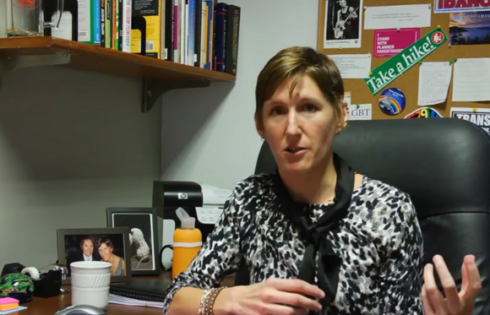
Porcelain represents ‘whiteness’
A doctoral student explores the ways porcelain can be used to confront “whiteness” by crushing crafted eggshells.
Victoria Burgher, a researcher at the University of Westminster, detailed her research in the Holt Journal for Artistic Research.
One way includes performance art involving stepping on porcelain eggshells while reciting a speech called “shattering whiteness” (portion below).
“The performance ended with me knocking the porcelain pot off its plinth, which smashed loudly and violently on the floor,” she wrote.
But it may have been for naught – did her performance actually only highlight her own “privilege,” she asked.
Burgher wrote:
While my aim was to spotlight whiteness for all the right reasons – to expose its role in oppression and anti-black racism – perhaps this performance was actually an example of peak whiteness. Literally making whiteness centre stage even if my motives were to critique it. Performing the shattering of whiteness is one thing, but the reality is something else. A white person can choose to lose their whiteness, not behave white, but what does this look and feel like? What does it require? The hypervisibility of this performance was painfully uncomfortable for me, but my white privilege is such that I can choose to occupy this position as and when it suits me – I don’t have to live it. >
After flagellating herself for being a white woman, Burgher explained how porcelain is intimately linked to European colonization.

“Porcelain” is representative of “whiteness,” according to Burgher.
In her essay, she described the connections between porcelain and racism.
“Over this time, ‘pure white’ porcelain developed connotations of gentility and refinement, elitism and social status,” she wrote.
This “demonstra[tes] how ideological whiteness is both materialised and projected by porcelain objects – objects that were being circulated in the centuries when anti-black racism was being used to justify enslavement,” she wrote.
“Can porcelain, a material so physically white and so historically and symbolically laden with preciousness and prestige, genuinely disrupt the ‘sedimented social practices’ of whiteness,” she asked.
The ceramics scholar then explained how porcelain is connected to slavery.
Late 17th century Europe had an interest in tea, coffee, and chocolate, which is kept warm in porcelain cups, she wrote.
Where does the sugar come from that goes into these drinks? Slavery.
Thus, hop, skip, jump – drinking hot beverages from porcelain cups is racist.
“Coffee and chocolate were often produced by enslaved labour, and all three drinks required the addition of sugar – the lucrative crop that fuelled the transatlantic slave trade more than any other,” she wrote. “Enslaved Africans in British colonies in the Caribbean and South America produced the sugar that generated the wealth required to purchase porcelain. “This directly ties the consumption of porcelain with the brutality of the chattel slavery system.”
While Burgher claimed “whiteness” is not about skin color but power, she also said she makes badges with the words “White but working on it.” Also, “white people” are “part of the problem,” she wrote to conclude her academic work.
“I am hoping that porcelain will operate as my crowbar for the ideological labour required for white people to see themselves as part of the problem.”
MORE: School district seeks asst. superintendent to ‘examine’ ‘whiteness’
IMAGES: Victoria Burgher/Holt Journal for Artistic Research
Like The College Fix on Facebook / Follow us on Twitter







Please join the conversation about our stories on Facebook, Twitter, Instagram, Reddit, MeWe, Rumble, Gab, Minds and Gettr.